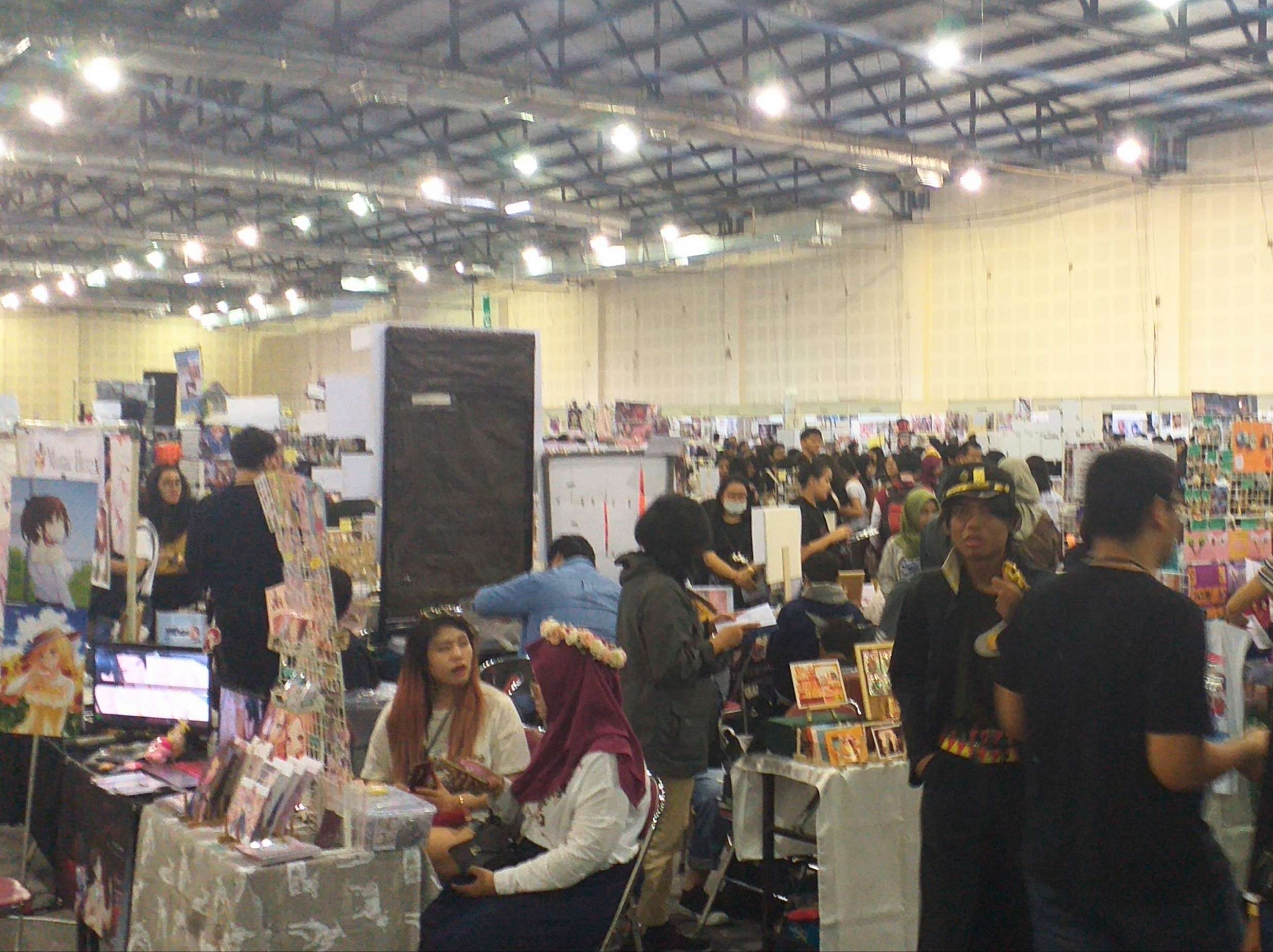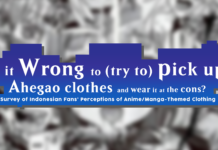Events are among the more visible manifestations of fan activities, and that also goes for anime fans in Indonesia. Why and how do people go to events, and what do they do there? In 2016, I conducted a research on perceptions regarding popular culture events in the Greater Jakarta area, which includes the capital city of Jakarta and surrounding cities of Bogor, Depok, Tangerang, and Bekasi (JABODETABEK). Although it covers only one major urban region in Indonesia and the three years that have passed since the time of the research means there have been changes and new developments that are unaccounted for, we’d still like to share the findings of the research in this article to give some look at a slice of event-related fan activities that can be found in Indonesia. The findings can still be relevant as a backdrop of comparison material in discussing more recent situations regarding fan participations in events in Indonesia.
As a start, there are many kinds of events that attract anime fans and there are more than one way to categorize them. One of them is to distinguish between business-to-community and community-to-community events. In business-to-community events, media companies exhibit their products, and visitors interact more with the brands. While in community-to-community events, fans exhibit their own works (though some corporate booths may be accomodated), and visitors’ interaction is largely with other visitors.
My research on the other hand, groups events based on the types of contents featured by the events. First, there are events that largely feature Japanese popular culture such as anime, manga, games, cosplay, doujinshi, and the like. These events include Anime Festival Asia (business-to-community) and Comic Frontier (community-to-community), among others. Next, there are events that feature Japanese culture in general, which includes traditional culture. Some well known events of this kind in the Greater Jakarta area include the Ennichisai of Little Tokyo, Blok M in South Jakarta, and campus festivals held by Japanese major students or Japanese clubs such as Gelar Jepang held annually at Universitas Indonesia in Depok. Then, there are events that feature popular culture in general, which can include “Western” contents and contents from Indonesian creators. Among these events are PopCon Asia and Indonesia Comic Con (both are more business-to-community events).
With so many events may be held within a year, people can go to events quite frequently. In my research, 48% of the respondents reported to go to events at least once in a month. 40% others at least once in three months, while 12% may attend 2-4 events in a month. With a variety of events at different places to choose from, how do people determine which events to attend?
In the Greater Jakarta area, the location of the venue is still an important factor in making decisions to attend an event or not. In this survey, at least 56.8% of the respondents said that they prefer not to come to events that are too far from their place of residence. Although transportation options has became more varied with the extension of Transjakarta bus rapid transit (BRT) network and the availability of ride-hailing apps, when faced with multiple events taking place around or exactly at the same dates, visitors would most likely choose the event closest to their place of residence to save time and transportation costs. Shorter distance means visitors can arrive earlier to the event and spend more time there, while lower transportation costs mean visitors can spend more money at the event.
On the subject of transportation, public transportation such as commuter train and BRT were the main choice with 40.9% of the respondents, followed by private vehicles, including motorbikes and cars, with 34.1% of the respondents. The accessibility of certain event venues such as Jakarta Convention Center and Balai Kartini from public transportation stops such as train stations or BRT stops may have factored into the choice of events to attend. However, the rise of ride-hailing apps such as GO-JEK and Grab has also given another alternative for transport, with 18.2% of respondents reported using them.
Next, cost of tickets is undeniably another contributing factor in deternining the choice of event to attend. From the survey I did, 79.5% of respondents said they were reluctant to come to an event if the ticket cost was quite expensive. About 20.5% others claimed that they had no problems with expensive ticket cost, and they would still come to the event. This is certainly closely related to the respondents’ economic background and plans for shopping at the event. Most of my respondents claimed to prefer to come to events with lower-priced tickets so that they could spare money to shop at the event. If the ticket cost is expensive, they might just come to the event to look around without shopping for either merchandise or food and drinks at the event.
In Jakarta alone, there is a lot of variety of ticket prices for popular culture events. They range from free admission at many school/campus/mall events to events which charge up to hundreds of thousands to millions of rupiah for tickets. Regarding this, 84.1% of my research respondents claimed to prefer to come to events with free admission. Some events with free admission which are often attended by respondents in my research include Ennichisai Blok M held in South Jakarta.
In addition, some respondents also answered that they have attended some other free admission events, such as Comic Frontier and GJUI (festival held by Japanese major students at Universitas Indonesia). But it should be noted that although Comic Frontier was initially held free of charge, since Comic Frontier 7, the committee applied an entrance ticket that costs around Rp 25,000-35,000 (around US$ 1.76-2.47). As for GJUI, this event is held for three days, with the first two days are free admission while the third day is held with entrance tickets that are not much different in cost to Comic Frontier. In addition to the two events, many also claimed to like to come to free admission events held at shopping malls. In Jakarta, there are indeed several malls that often to hold popular culture events such as Taman Anggrek Mall, Lotte Kuningan and Mangga Dua Square.
For events with expensive tickets, almost all of my research respondents mentioned two events, namely Anime Festival Asia (AFAID/ C3 AFA JKT) and Indonesia Comic Con (ICC). Both of these events are considered as having expensive ticket prices because the costs are above Rp 100,000 (about US$ 7.05). Actually, the costs for Indonesia Comic Con tickets at the time of this research, which ranges from Rp 100,000-120,000 (around US$ 7.05-8.46), were still relatively cheap compared to AFA tickets, which range from Rp 100,000 for one day Exhibition admission only, to Rp 1 million (about US$ 70.51) for tickets to the Anisong VIP concerts for up to 2 days.
Next page: socializing and shopping









[…] Fan Event Culture in Indonesia: Findings and Insight from Greater Jakarta Area (The Indonesian Anime Times, Halimun Muhammad) […]